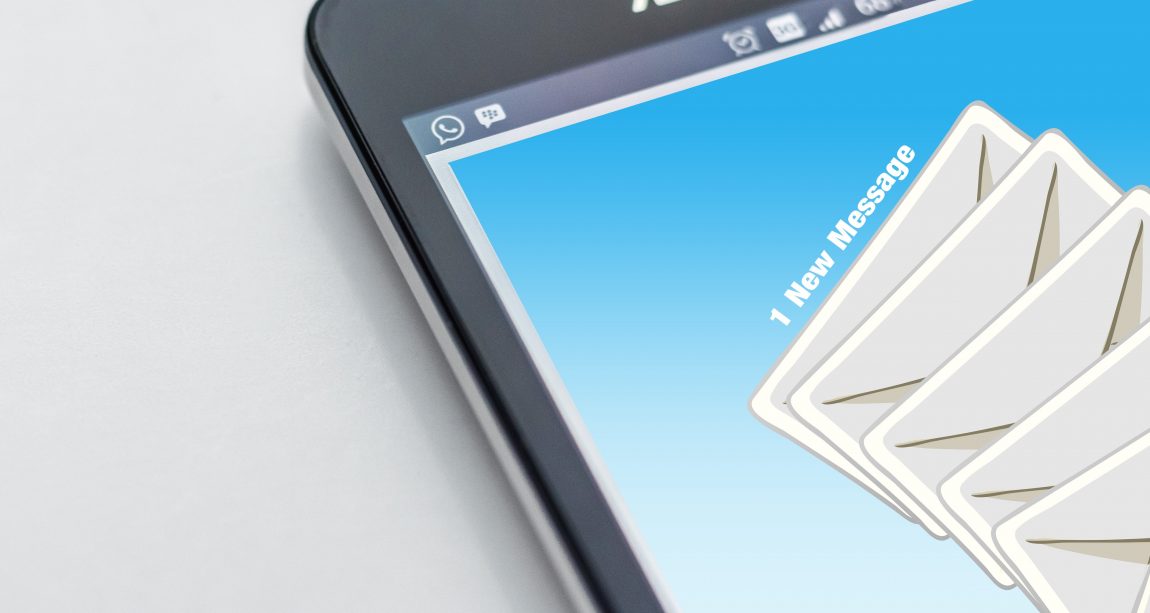How To Make Your Trade Show Exhibit Count
by MGB2B
For manufacturers looking to get their products and/or services in the hands of company decision makers and buyers, there’s no better forum than a trade show. Attendees show up in droves specifically looking for new ideas or investments to improve their business. Because of their large scale, trade shows can often be hard to prepare for, especially in the limited timeframe given and the number of moving parts involved. But don’t panic. We’re here to help prepare you to put your best foot forward. (more…)
Continue ReadingFive Don’ts of B2B Email Marketing
by MGB2B
As a B2B marketer, maintaining a positive relationship is vital to your sales funnel. One of the best ways to do that is through B2B email marketing. It’s one of the most productive lead generation tools, but there are many ways to overstep your boundaries. When it comes to content, accessibility, and frequency, here are five things to keep in mind as you construct your next email campaign.
1. Sending Too Frequently
Many things are better in moderation, and marketing emails are no exception. We know what you’re thinking: we just told you that staying in touch with your customers is important. But flooding their inbox can have the opposite effect. Your customers receive hundreds of emails like yours, and it’s your job to ensure your email doesn’t get lost in the clutter. By sending emails less frequently, your customers will be less likely to feel badgered and opt out of future communications.
2. Lack of or Excess Personalization
There’s lots of talk of personalization these days, and with good reason. Consumers want to feel attended to and known. In fact, 82 percent of marketers reported an increase in open rates through email personalization, while 75 percent believe that personalization yields higher click-through rates. But keep in mind, this is more than simply a “Dear So & So.” It’s about knowing what your customers want. Sending them emails with products that match their previous interactions with you is one way to do it. But if you send them emails for products that don’t match their interest, or worse, products they’ve already purchased, your emails will become more white noise in their inbox.
This has to be done with a deft hand, however. Too much personalization can be a turn off in a creepy, big brother sort of way. It’s all about balance, folks. Fine tune your efforts so personalization is gradual, purposeful, and accurate.
3. Mobile-Unfriendly Layout
Though people still use their desktops, more and more people stay on top of their email from their phones. It’s important to make sure your content is optimized for all devices. If your images don’t load or your text is wonky, you can expect a swift delete.
4. Poorly Written Content
Customers are savvy. An elementary voice, grammatical errors, or poorly written content suggest your company shouldn’t be taken seriously. Furthermore, body copy that’s too wordy will be a turn off because no one has the time to read a tome.
5. Bad Subject Line
The subject line is the first written content your customer sees, and will define whether they open or delete it. Short, to the point, with just enough hook to pique their curiosity is the way to go. Otherwise, your email content will never be seen.
Considering that today’s marketers need to do more with less, email marketing gives us a whole lot of bang for our buck. And while other marketing trends come and go, email marketing remains a workhorse. To use it to its fullest potential, make sure you keep yours in line with the tips above.
Continue ReadingBuilding B2B Buyer Personas: 6 Key Questions to Ask
by MGB2B
Using Buyer Personas to Cut Marketing Waste
Is there a lot of waste in your company’s advertising? That is often the case for B2B brands. Your audience can flip past ads. They can scroll past banners. When you produce a general marketing campaign with one message to a broad audience, it can be overlooked by a good portion of the audience. Instead, arm yourself with targeted Buyer Personas. A Buyer Persona is a detailed profile of your ideal buyer. It usually includes demographic and psychographic information, media consumption, and purchasing behavior. Often, it’s necessary to do extensive market research (both qualitative and quantitative) to establish an effective Buyer Persona. And in most cases, you’ll want to create multiple buyer personas to target different verticals or decision makers.
Take a Look at These Key Areas to Investigate When Developing Buyer Personas:
- What Are the Demographics?
Before you dive into needs and wants, it’s crucial to establish a demographic profile for your Buyer Persona. Get to know the typical age, education, job title, and industry of your buyers. These all play a major role in who they are as a B2B decision maker. - What Are Your Buyers’ Goals?
It’s important to gain an understanding of what your Buyer Personas are looking to achieve on the job and what they need in order to be successful. The information you gather will help you to better understand how to help them achieve those goals. And you can create marketing content with these goals in mind. - What Do They Value Most?
Once you know their goals, you’ll want to identify the key attributes that drive a buyer’s decision-making process. Ease of use. Support. Price. Identify what your buyers value most. Then, you can use it to develop products and services they need and messaging that resonates. - What Are Their Pain Points?
This is one of the most important areas to identify for your Buyer Personas because it gets to the root of the benefit you can provide. When you know pain points, you can work to help your buyers overcome their most difficult challenges. Pain points are a great way to fuel both product and content development. They inspire fodder for blog posts, white papers, videos – you name it. - How Do They Feel About Your Competitors?
It’s not only critical to understand the demographic and psychographic profiles of your Buyer Personas. You also need to understand their relationship with your competitors. To get started, ask questions that help define your competitive landscape and identify holes in the marketplace that your brand can fill. - How Do They Like to Be Reached?
Lastly, once you’ve created detailed profiles of your Buyer Personas, it’s important to know the best way to reach them. Do they prefer face-to-face contact with your sales reps? Or is a monthly email their preferred means of staying updated? Do they like videos? Or follow brands they like on Facebook? With so many means of communication, you can get a leg up by allowing your Buyer Personas to identify where they are and what they’re looking for. It’s the best way to make sure your message gets through the clutter and directly to your target.
It may seem like a lengthy process to develop Buyer Personas. However, the reward of a streamlined, highly targeted marketing program is well worth it. You’ll see increased engagement and return on investment, as well as happier customers. After all, even B2B buyers like to receive helpful hints and content designed specifically for them, as opposed to a mass-market campaign that casts a wider net. And happy customers make for a happy brand.
Continue Reading

